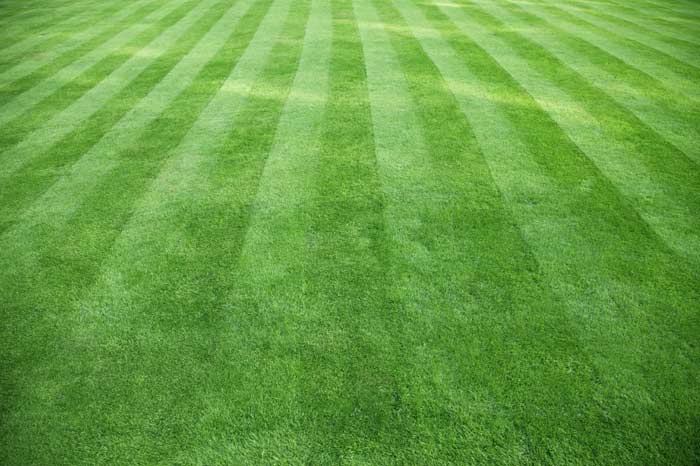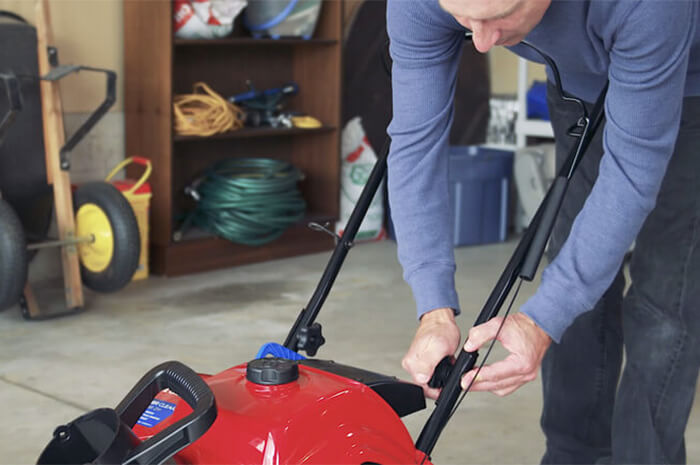
If you’re unclear about what type of grass seed you need, don’t make any decisions on impulse! Finding your area’s lawn zone can be the difference between having low-maintenance grass or having a lawn that’s susceptible to pests, weeds, diseases, and poor health in general. So, before finding your seed, it’s best to consider several factors:
Important Considerations Before Buying Grass Seed
What do you want your lawn to look like?
Grasses vary in color, blade width, density, and habit (shape and form). The color and texture of grass varies not only by species, but also by factors such as sun exposure, fertilization, and drought.
A grass’s density also has a significant effect on appearance. Dense turf works to crowd out weeds and support foot traffic better than sparse turf.
How much time and money do you want to spend?
Higher-maintenance grasses may have the appearance you’re looking for, but they require a greater commitment of time and money.
Know your growing conditions.
Think about the amount of sun your lawn gets, your climate, and your expected rainfall. You’ll also want to assess your soil type and its fertility. These specific conditions, and your overall grass zone, will likely steer you toward or away from certain types of grasses.
How will you use your lawn?
Are you seeding for landscaping purposes, erosion control, or to facilitate a play area? Knowing how you want your lawn to perform will help determine what kind of grass will work for you.
Grass Zone Maps and Resources
If you read any research reports from various grass institutes, you’ll find the number of grass species astonishing. The sheer volume alone can be overwhelming, not to mention the long lists of conditions and characteristics.
While finding the right grass seed for your yard can seem daunting, there are ways to simplify this process. You can avoid confusion by contacting your Cooperative Extension Service (CSREES) and speaking with a turfgrass specialist. Other excellent resources include the National Turfgrass Evaluation Program (NTEP) and the Guelph Turfgrass Institute in Ontario, Canada.
If you prefer to do your own research instead of reaching out to experts, you can start by using plant hardiness and heat-zone maps. Think of these as lawn zone maps, helping you determine what type of grass is suitable for your climate. A grass that is right for Vermont, for example, may not fare well in Texas – and vice versa. Essentially, the appropriate choice for your lawn is determined by your area’s growing environment. Here are some helpful maps:
USDA Plant Hardiness Map
The USDA Plant Hardiness Map divides the United States into 11 (grass) zones according to the average winter low temperatures. Hardiness zones identify what regions certain grasses are suited to, based on their specific cold tolerance. Many factors, such as elevation and moisture level, also come into play. It’s important to note that local climates may vary from the map. We recommend contacting your local Cooperative Extension Service (CSREES) for seed recommendations for your area.
Canada Plant Hardiness Map
Canada’s Plant Hardiness Map outlines the different (grass) zones in Canada where various types of grasses will most likely survive. Based on the average climatic conditions of each area, the hardiness map is divided into nine major zones: the harshest being 0, and the mildest being 8. Relatively few plants can survive in zone 0.
Subzones are also noted in the map legend, with 4a, 4b, 5a, and 5b, which are the most familiar to Canadian gardeners. Some significant local factors, such as micro-topography, the amount of shelter, and subtle local variations in snow cover, are too small to show on the map. Year-to-year variations in weather and gardening techniques can also have an impact on plant survival in any particular area.
The American Horticultural Society Heat-Zone Map
The American Horticultural Society (AHS) Heat-Zone Map divides the United States into 12 (grass) zones, based on the average annual number of days in a region where the temperature climbs above 86 degrees Fahrenheit. Above 86 degrees, the cellular proteins of a plant begin to experience injury. First introduced in 1998, the map is especially helpful for gardeners in southern and transitional zones.
Typically, nurseries, growers, and other plant sources list both cold hardiness and heat tolerance zones for grasses. Using the USDA Plant Hardiness Map and the AHS Heat-Zone Map, gardeners can safely choose grasses that tolerate their region’s lowest and highest temperatures.
You can also read more about the best cultivars for warm-season grasses versus cool-season grasses to help you make your decision.



